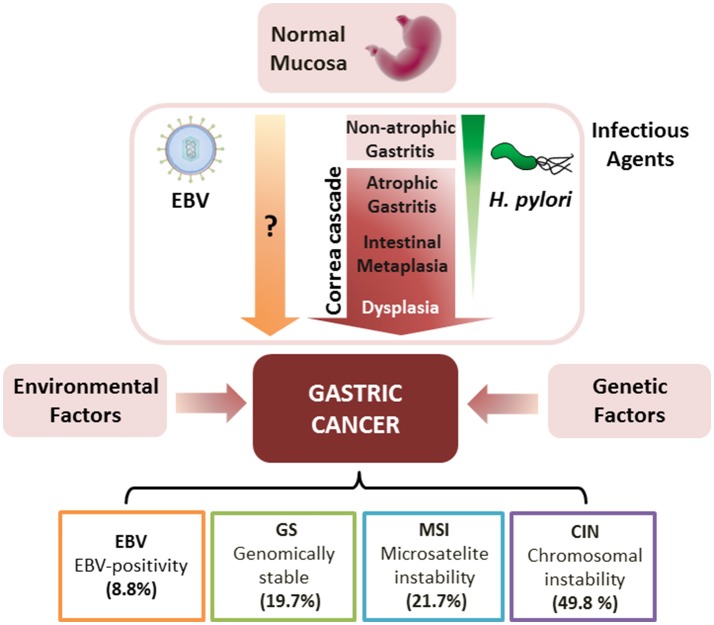Figure 1.
Gastric carcinogenesis, in context of chronic infection (H. pylori and EBV), and TCGA classification of gastric cancer. H. pylori colonizes normal mucosa inducing non-atrophic gastritis and the precancerous “Correa Cascade,” consisting of multifocal atrophic gastritis, intestinal metaplasia and dysplasia. H. pylori is usually lost during the progression of these lesions (fading green triangle). This process can be complemented by host-dependent genetic and environmental factors leading to gastric cancer. Alternatively, EBV can lead to the development of gastric cancer in an unknown manner. According to TCGA, gastric cancer tumors can be classified by (i) EBV-positivity (EBV), (ii) genomically stable (GC), (iii) microsatellite instability (MSI), and (iv) chromosomal instability (CIN). Percentage of each subtype is shown.

